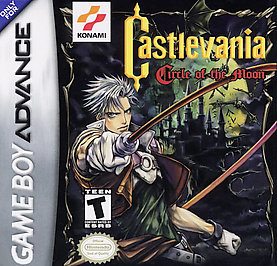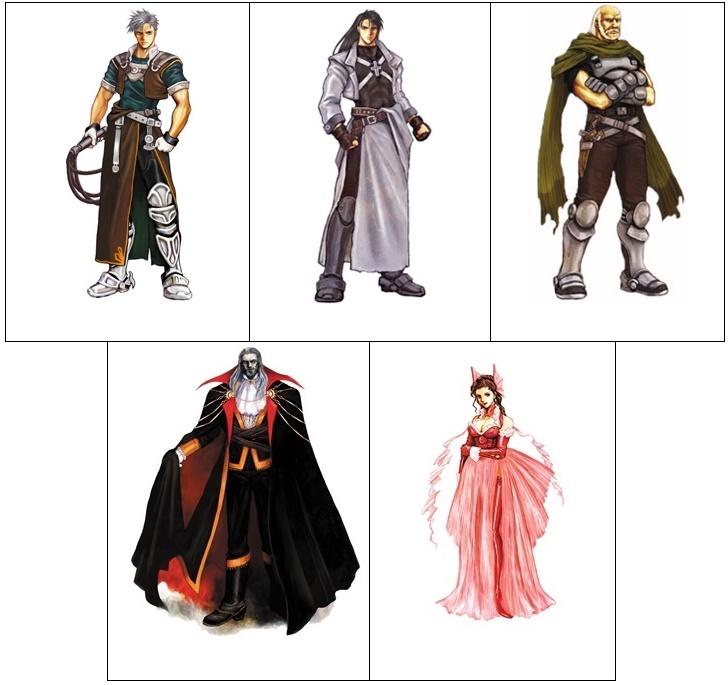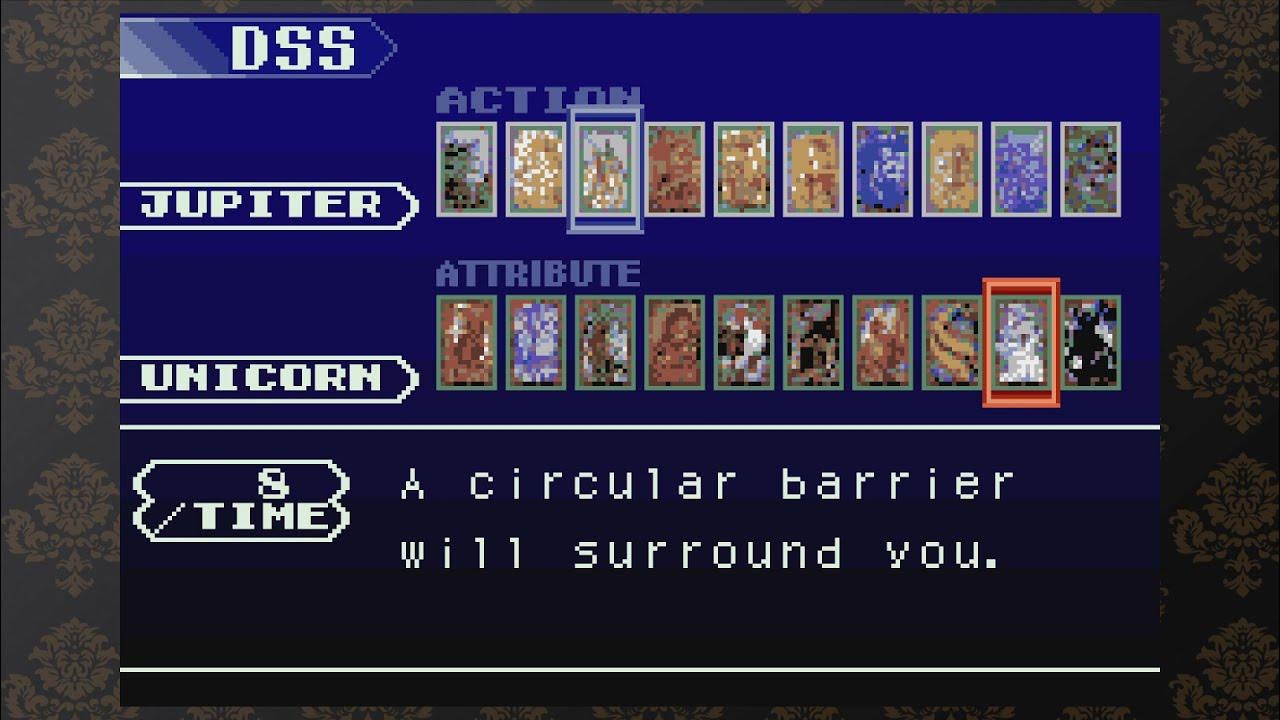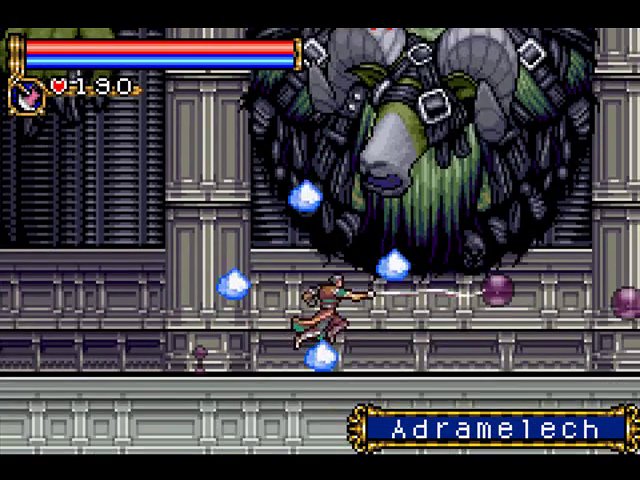Castlevania: Circle of the Moon - Grind Beyond the Moon
12/11/23
Castlevania: Circle of the Moon

Y’know, considering how many goddamn games there are on the GBA, and how *few* Metroidvanias there are, a smart person wouldn’t, in fact, play two of them in a row as to pad out the actually good games on the platform. Well, luckily for y’all, I am not, and never have claimed to be, a smart man. With the recent release of Castlevania: Nocturne on Netflix, and Halloween having just passed us by, I felt this was a perfect time to tackle the first of the informal ‘Castlevania Advance Trilogy’ - Castlevania: Circle of the Moon, a title that highlights some of the things that makes Castlevania one of the kings of the subgenre… and also underlines some of its greatest struggles.
Up until the release of the Castlevania Advance Trilogy re-release on the Switch last year, Circle of the Moon was probably the Castlevania title I’d heard the last about. Even forgetting about the earliest games, in Metroidvania country everyone just raved about Symphony of the Night on PS1, or even on the GBA, it was all about Aria of Sorrow. Circle of the Moon is… interesting. In some ways, it’s a game of extremes; it features one of my favorite ‘gimmicks’ in the series, as we’ll soon get into, but that very system - and the fallout if it being so central to the game - suffers from some really, really frustrating decisions. Let’s dive right in, because I’ve got a lot to say.
Following on from the gameplay paradigm shift Castlevania received when Symphony of the Night received near universal acclaim, Circle of the Moon continues the franchise journey into true metroidVania territory. As compared to Symphony of the Night, Circle of the Moon absolutely feels like a middle ground between Castlevania past and present. You’ve got the expanded map and non-linear design Symphony of the Night was oh-so-good at, whilst Nathan Graves, our protagonist, feels, moves, and fights like a Belmont, slowing down the pace of the fights as opposed to Alucard. It’s certainly faster than Rondo of Blood, which I appreciate. Anyway, if you’ve played any of the more classic Castlevania games, you’ll understand what I mean; you’ll be moving through both horizontal and vertical environments, initially only utilizing the classic Belmont whip and sub-weapons like the Cross or Axe, slowly unlocking new abilities that’ll grant you further access to Dracula’s castle. It’s a pretty typical slice of both eras of Castlevania, though it’s the more unique gameplay systems that make Circle of the Moon stick out a little more.
In its narrative, whilst Circle of the Moon has a little more going on then the early, pre-Symphony of the Night titles in the series, it really doesn’t do much to deviate from its simpler storytelling. Plot twist - Dracula is back, and protagonist Nathan Graves has to navigate his twisting, laybrythine castle to track him down, rescue his master, and put down the king of evil once (at least until the next game) and for all. There’s no real twist and turns you won’t see coming from moment one, especially when it comes to Nathan’s fellow student Hugh, but like with many early Metroidvanias, the narrative was never designed to be a focus. Still, it’s a little lame just how predictable the storytelling can be, but at least the character designs generally kind of rule - shout out to Camilla’s huge mermaid-hair-ear-things. Also, Dracula’s hot as always. Just facts.

Each of the three GBA Castlevania games had some kind of main gameplay gimmick, and in the case of Circle of the Moon, the major gameplay element is the DSS - Dual Set-Up System - Card system. Now, alongside enemies dropping equipment and consumable items, a certain selection of creatures throughout the castle can drop singular cards from the DSS library of cards. The cards appear in your menu as two horizontal rows of cards, and once you’ve obtained at least one of each row, you can combine them to unleash a massive variety of different skills and abilities. Let me break it down; the top set of cards are what dictates the ‘type’ of ability - this can range from shooting elemental orbs, switching your whip for a different, elementally charged weapon, or even bringing out summons, creating shields or healing you outright. The second row of cards will alter the state of the ability - for an example, changing a fireball into an iceball, or summoning a particular summon from the suite of choices. It is an incredibly varied, in-depth system, and whilst I can say there are a bunch of options that are far, far less useful than others (never found a use for any of the plant-based options) it’s incredibly impressive, in a perfect world, how much agency this game gives the player in how they tailor their playstyle. Personally, I spent a decent amount of my wandering throughout Dracula’s castle using the various elemental swords, since I really appreciated the increased speed that came from the blades, but I could totally see someone clicking with the card combos that give you greater reach.
Basically, the DSS system is incredibly fun to play around with, helping you tailor your playstyle to YOUR personal preference. It comes with one very, *very* major caveat, at least on an initial playthrough. You see, whilst there’s a genuinely massive amount of combinations of cards you can play around with, I’m willing to bet the average player won’t even see half of them because of simply how low the drop rates. And I’m talking *low*; below three percent drop chance low. This eventually pushed me over the edge when I was in search of the Saturn Card, which allows you to summon spirits and familiars to assist Nathan in battle. It’s a pretty major mechanic, and I always love summons and all that. The *only* way to get this card is from a decently powerful, annoying to fight enemy, surrounded by *other* enemies that inflict Curse, the worst status ailment in the game, PLUS, she’s nowhere near a save point, and the cherry on top is that it comes with a piss-poor 1.4% chance to actually drop the card in question. I spent actual *hours* trying to grind out this card, but eventually it just wasn’t worth it. It’s insane that such major gameplay mechanics, whilst not needed to beat the game, are tied behind such abysmal, unfun odds. I should say that there is a well-known bug that, once you have access to at least one card from each set, you can trick the game into thinking you have literally any card. It does sort of alleviate what is easily my biggest issue in the game, but I shouldn’t *need* to utilize a bug to, y’know, have fun.

This is coupled with an incredible difficulty spike in the last third of the game that absolutely does not match the curve of EXP you’ve been obtaining as you make your way through Dracula’s castle, turning the last couple of boss fights you encounter - especially the climatic, multi-part Dracula battle - into long, drawn out slugfests that are more frustration than enjoyable. Plus, grinding isn’t an easy task, as the very best EXP sources come from enemies that hit hard, fly around, and generally hang out around the most annoying enemies in the game. I’m looking at you, Fallen Angel. Generally, I read that summons are a great way to insta kill enemies and farm EXP this way - but as you already know, the summons aren’t exactly easy to get, aren't they? It is good that the game remains a decent challenge throughout, but it’s a bit frustrating that its stride rapidly outstrips your own when, up until the last few boss fights, just having a decent strategy and making good utilization of the DSS cards would be enough to pull you through.
Beyond the DSS system, Circle of the Moon follows a pretty traditional metroidvania format. Initially ‘locked’ to a relatively small area, with each major upgrade you locate - usually behind a boss fight - you’ll gain new platforming abilities that’ll expand your access to the various locales that make up the castle. None of the abilities are particularly interesting, being more of a utilitarian necessity than anything else, but with the flexibility provided by the DSS system, this doesn’t even register as an issue to me. Enemies can also drop equipment that’ll boost your various stats, but it’s more an afterthought in this game. There’s no shop or any real way to sell or get rid of any duplicate or redundant gear, so by the time you reach the final stages of the game you’ll have a ton of just random copies of low-tier gear. It doesn’t really change much, but with the focus on the game’s main system - DSS - it feels like such an afterthought, and really doesn’t do much to change how the game plays. The fact I had half a dozen leather armor pieces is just amusing.
Dracula’s castle is a big place - there aren’t any real collectibles to hunt down, but fully exploring the winding passages and soaring towers of the castle you’d otherwise leave unvisited will usually reward you with potions that’ll raise your HP, MP, or your sub-weapon hearts permanently, giving Nathan a real good reason to really sniff out every corner of the castle - and this’ll come in REAL handy once you hit that aforementioned difficulty spike. More a personal gripe than anything else - I kinda wish there was at least one save point that was adjacent to a teleporter. I just found it really annoying that there was never one that was just a corridor walk away - there’s always some platforms to dance along or enemies to deal with. It’s not really an issue, but when it came to grinding out some of the DSS cards, I would've appreciated a little bit of help there.
Whilst there were a handful of Castlevania games released for handheld prior to Circle of the Moon, this is the first time I think a handheld Castlevania felt like a part of the series. It’s a bonafide successor to Symphony of the Night, though obviously without some of the more notable graphical flourishes that made Symphony so mind blowing. The Castle itself has everything you’d want; blood-soaked canals, a clock tower complete with pointless gears and mechanisms, pointlessly long corridors… I might sound a little sarcastic, but I love how pointlessly complex the areas of the castle are. It’s a game, I know, but I’m just picturing Dracula spending an hour strolling down the Endless corridor, it just makes me laugh. The creature design is top-notch, too, especially in the boss department. I wish there were a little more of the ‘silly’ enemies that were more endemic to earlier titles in the series - where’s my ‘Skeleton Boy’, carrying a plate of curry? Or more prominently, where’s literal bolts-in-neck Frankenstein? Where’s Frankenstein, Konami!? Is he safe!? Uh, anyway, Circle of the Moon’s bosses fall more on the ‘giant monstrosity’ side of things, with big, bold, beautiful sprite work really selling how screwed up Dracula’s minions are. Adramelech, a great goat demon, and Camilla’s true form are real stand outs design wise, genuinely top-tier stuff. The fights themselves are all generally quite challenging, but I really appreciate how they really make you consider the DSS, with certain bosses really struggling to counter certain combos. If I hadn’t discovered the ‘shield’ DSS cards, I’m not sure if I’d been able to take down foes like Zombie Dragon(s) - though this does feed into the whole ‘DSS Card Drop Rate’ issue. Ah well. At least, after you beat the game, this gets a little more palatable…

Another thing I can’t help but praise is the sheer amount of replay value this game holds. Even if you’re not one to dig out every secret and explore every inch of the castle, Circle of the Moon rewards you with additional, remixed game modes once you clear the game. In some ways a response to my main problem with the game, completing the game for the first time unlocks Magician Mode, which starts you off with generally lower stats, but grants you access to the entire suite of DSS cards from the jump. Completing *that*, conversely, will unlock Fighter Mode, which’ll lock away the DSS system in its entirety, but buff your physical damage output and turn Circle of the Moon into a more traditional Castlevania game in the process. There are a few other game modes to unlock further along, but these initial two, in some ways, save the game from the issues inherent to its drop-rate conditional DSS and Fighter Mode scratching an itch for the more classic Castlevania fans. This is how you get people to replay games, I’ve got nothing but good things to say about this.
I really like Circle of the Moon, but *man* does the DSS drop rates really hurt it for me. With the Advance re-release allowing you to save state and reverse time, along with knowing which enemies drop which cards fixes a lot of these issues, but that doesn’t quite excuse it in this original release. Despite that, Circle of the Moon can feel a bit formulaic, but the sheer variety presented by the DSS and the multiple game modes you can unlock do a ton to make Circle of the Moon stick out amongst giants. Beyond that, it’s just a solid Castlevania game, only really hit by the extreme difficulty spike and some little, nit-picky problems here and there. It might not be the most well-remembered title, but for Castlevania and overall Metroidvania fans, I don’t think you can really go that wrong with Circle of the Moon; it might not match its titans, but it has strengths all its own.
Thank you so much for reading my review of Castlevania: Circle of the Moon! This one probably should’ve come out a little bit earlier, considering I wanted to time it with Nocturne’s release, but oh well. Strap in guys - I’ve played too many good games recently, so we’ll be taking a look at a bit more of the shovelware available for the system. As always, you can email me at cckaiju@gmail.com or mgeorge7003@hotmail.com if you have any questions or requests. Thanks again for reading, and I’ll see you next time!
